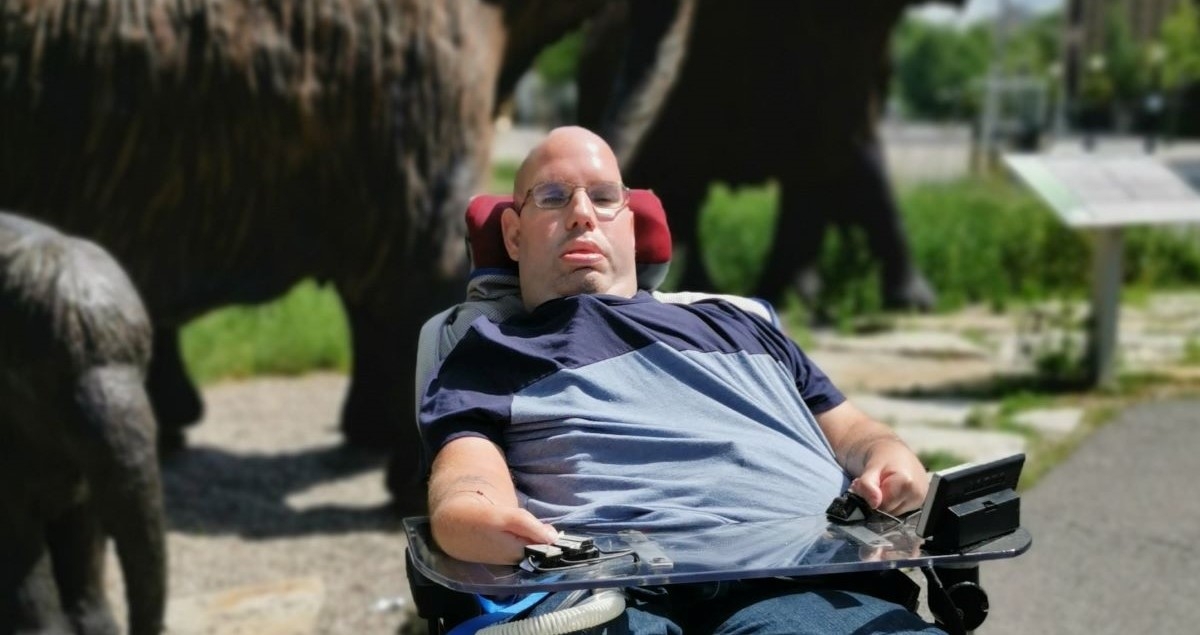
Living with long-term disabilities: this is how we roll
Last week’s column was a bit of a downer, but it’s a reality for many people with disabilities, including myself. I just want to say thank you to those who reached out to me and shared their experiences. That’s one of the reasons why I enjoy doing my column here. When you’re a person with or even without a disability, sometimes you feel alone when you’re going through a rough time, and you feel like nobody understands what you’re going through. You’d be surprised at what happens if you speak up.
Thanks again.
So, let’s switch gears, shall we/? Almost quite literally.
Last Thursday, I finally received my new wheelchair. This is pretty big news for me, and it took several months, but it was worth the wait. There are still a few more things that need to be worked on before switching over to it full time.
Most of the issues are tech-related. For example, in my old chair, I used my chair’s directional buttons with the help of Bluetooth to move the cursor on my computer so I can type using an on-screen keyboard. Without that, typing is much more challenging and time-consuming. I’m physically unable to use a cellphone, so my typing, including this, is done by me using my computer.
Besides that, the speed, sensitivity of the driving part may need more finetuning. I haven’t had many chances to drive it yet, but I plan to once the weather gets nicer. For the first few times, I’ll probably just drive around the parking lot outside my place and then maybe a nearby park. One of the good things about another lockdown, or whatever this is, is that there are fewer people around.
Driving a new powered chair can be nerve-racking. At least for me, it is. I’ve never driven a car before, but I imagine that it’s pretty similar. Wheelchair drivers don’t use highways, but attending Bluesfest and trying to move around can often feel like rush hour traffic on the Queensway, especially before a Sens game.
Ahhhh . . . . pre-Covid memories.
Getting a new wheelchair often takes a very long time. Much of it depends on your disability, needs, body shape, and how your condition changes over time.
And, of course, there’s the funding aspect.
A new powered wheelchair can often be around the same price as a new car. It largely depends on what type of technology you need and the materials required to make you feel comfortable. I typically spend 15-16 hours a day in my chair, so I must be as comfortable as possible.
Over the years, I’ve had people ask me what the steps are in getting a new chair.
Some aspects vary depending on the person.
In my experience, the conversation starts when my chair starts breaking down after a few years. Once repair costs start adding up, the cheaper option would be getting a new chair.
The first step is to get an Occupational Therapist (OT). This can be set up through the Ottawa Rehabilitation Centre or elsewhere in the city.
An OT assesses your needs as far as making you as comfortable as possible and your independence and improving your life. If you don’t already have an OT, the waiting list can be pretty long.
Once you see an OT, you may also need to meet with someone regarding your seat design. Their job is to figure out what materials are required to make your chair comfortable and support your body.
Once that’s done, your OT fills out a form and sends it to the Assistive Devices Program. ADP provides financial assistance for equipment and supplies for people with long-term disabilities.
One thing about ADP is that they only cover 75% of the cost. The rest of the price falls on you. Fortunately, organizations like Easter Seals, Muscular Dystrophy Association Of Canada, and many others can help you.
With all these organizations involved plus ADP, it can take a very long time to get approved for a new chair.
Once you’re approved, the appointments start.
The appointments can include measuring you, repositioning your body, trying different cushioning and other body support systems. Also, if it’s a powered chair, you may need to try new joysticks or other devices to control your chair. The list can be long depending on your needs and disability.
Generally speaking, the whole process can sometimes take at least a year or two years. Quite possibly longer now and for the next little while due to Covid.
For me, it took almost a year, and it may end up being over a year before everything’s done. The thing is, though, is that it’s well worth the wait.
In the few times that I’ve sat in my new chair, I can already tell that I’ll be much more comfortable and be much more independent.
. . . . And for that, I’m incredibly grateful.









